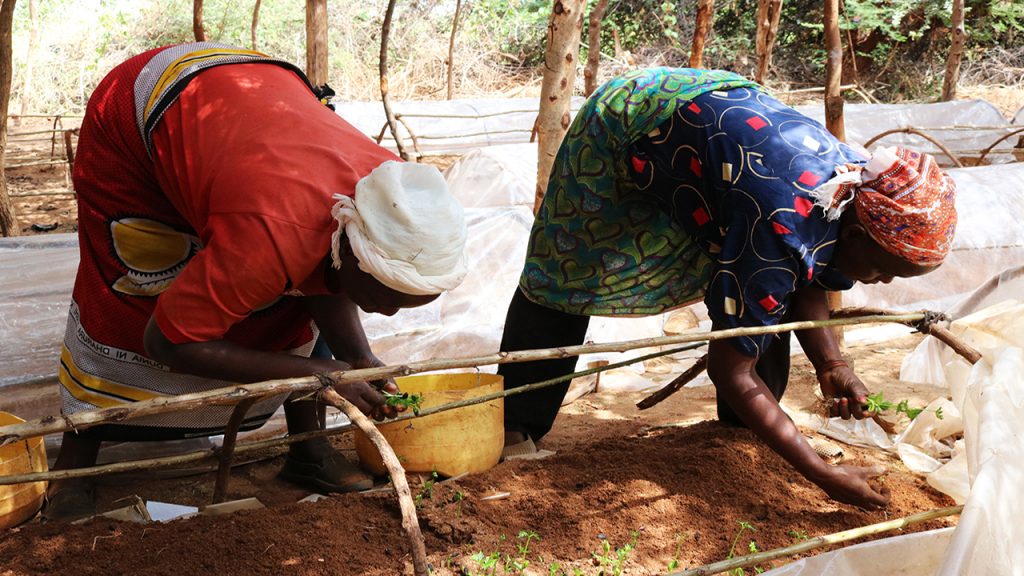
Drought forecasts for humanitarian action and elephant conservation in Africa
Researchers have successfully implemented a forecasting tool to assess the risk of droughts occurring across Africa.
Droughts occur when a region experiences below-normal levels of rainfall. The lack of adequate rainfall can cause reduced soil moisture, limited vegetation growth, and water shortages.
Dr Vicky Boult, research scientist at the National Centre for Atmospheric Science and the University of Reading, explains how the TAMSAT-ALERT tool (also known as Tropical Applications on Meteorology using SATellite data and ground based observations – AgriculturaL Early waRning sysTem) works to forecast droughts:
“TAMSAT-ALERT uses a number of meteorological variables, including rainfall, to drive a land-surface model. The land-surface model simulates the movement of water through the land-surface, considering both the type of soil and the vegetation, to estimate soil moisture. Soil moisture is vital for crop and vegetation growth, and any soil moisture deficit – or drought – can limit the food and water available to people, their livestock, and wildlife.”
While it is not possible to prevent drought, early drought warnings do allow for preparations to minimise the impact on lives, livelihoods, and wildlife.
TAMSAT-ALERT soil moisture forecasts are produced every five days for the whole of Africa and look 150 days into the future. The forecasts are produced by researchers at the National Centre for Atmospheric Science, the National Centre for Earth Observation and the University of Reading.
These forecasts can reliably anticipate drought several months before impacts are felt, and are useful for a range of decision making processes across agricultural, humanitarian and conservation sectors.
TAMSAT-ALERT agricultural decision support
Across much of Africa, smallholder farmers rarely have access to irrigation systems and instead rely on highly variable seasonal rainfall to support crop growth. If a drought occurs, crops can fail, threatening food security and negatively impacting livelihoods.
Reliable information on the likelihood of drought can help inform decisions about when to prepare land and plant crops, or whether to plant drought-tolerant crops that season.
TAMSAT-ALERT works in collaboration with the One Acre Fund, an agricultural service supporting Africa’s smallholder farmers. Together, they have been able to provide planting date recommendations via SMS to more than a million farmers in East Africa and South Africa.
After running operationally for three years, farmers receiving TAMSAT-ALERT planting date advice have seen on average a 10% improvement in crop yields.
Forecast-based humanitarian action
Historically, humanitarian organisations have responded after extreme weather events have occurred. Reactive responses can be disproportionately expensive, and cause delays in implementing humanitarian aid at a cost to people, the environment, and the economy.
Forecast-based action allows for humanitarian organisations to act in a timely way before an extreme weather event occurs, based on early warnings.
“In theory, acting early, before a disaster strikes, improves preparedness, minimising impacts on lives and livelihoods and ultimately reducing the humanitarian burden. In practice, there are now a number of examples for hazards ranging from flooding to cyclones to drought, showing just how beneficial forecast-based action can be,” says Dr Vicky Boult.
Early drought warnings provided by TAMSAT-ALERT allow disaster risk management organisations – such as Kenya’s National Drought Management Authority – to trigger early action to prepare communities for drought. Preparations, such as storing water or planting drought-tolerant crop varieties, can minimise the impacts of the drought, helping to protect the lives and livelihoods of local communities.
Forecast-based elephant conservation
When droughts occur, the lack of food and water not only affects people, but also impacts wildlife. Across much of Africa, agricultural communities share space with wildlife, including elephants.
Being the world’s largest land animal, elephants require huge amounts of food and water. When droughts occur elephants compete with people and their livestock for resources, raiding farmers’ crops and damaging local communities’ water stores. Amidst the chaos, both people and elephants may be injured or killed.
Human-elephant conflict can be devastating to communities who rely on agriculture for their food and livelihoods, and to elephant populations, which have already declined dramatically in the last century.
“In some parts of Africa, human-elephant conflict is now a leading cause of non-natural elephant mortality and communities face the daily fear of losing their lives or livelihoods to hungry elephants,” explains Dr Vicky Boult.
TAMSAT-ALERT’s early drought predictions would allow for elephant conservation organisations – such as Save the Elephants and Big Life Foundation – to anticipate periodic increases in human-elephant conflict caused by drought.
Conservation organisations can then increase measures to prevent human-elephant conflict, for example, strategically deploying wildlife rangers or ramping-up the installation of crop-protection fences.
Climate change and drought
As human-induced climate change continues to drive an increase in global temperatures, extreme weather events like droughts are more likely to occur.
Droughts are likely to change in different ways in different regions of the world, but it is clear that climate change is driving an increase in drought onset speed.
Drought-forecasting tools like TAMSAT-ALERT will be crucial in helping to protect the lives of people and animals, and in supporting food security and local to global economy.
